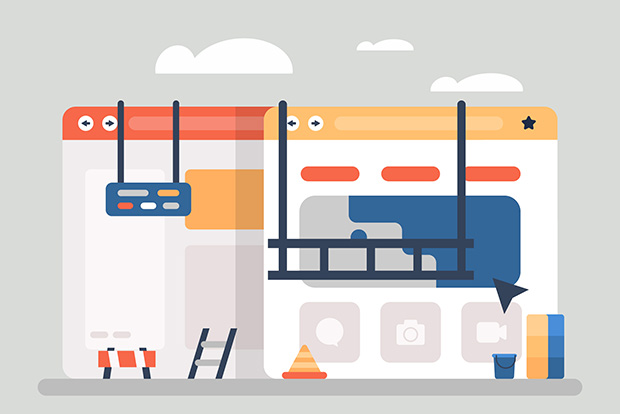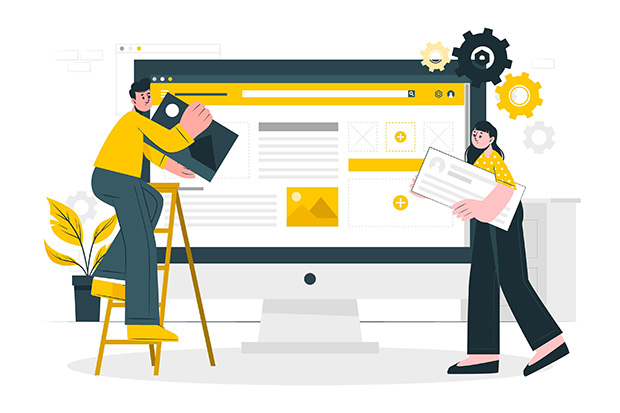Beyond Drag-and-Drop: Exploring the Capabilities of Simple Website Builders

Creating a website used to be a job for tech experts who knew how to code. Today, thanks to simple website builders, anyone can build a beautiful site without writing a single line of code. These tools are popular because of their drag-and-drop interfaces, making it easy to design a website by simply dragging elements into place. But there's so much more to these website builders than just drag-and-drop.
In this article, we'll dive into the basic to advanced features that a simple website builder offers. Whether you're a small business owner, a blogger, or just someone looking to create a personal website, knowing these features can help you make the most of your site. We'll explore how you can go beyond the basics to create a website that's not only attractive but also powerful and functional.
Website Builders and Their Significance
A website builder is a tool that allows you to create a website without needing to know how to code. They are designed to be user-friendly, so even beginners can build a professional-looking website.

Source: Image by storyset on Freepik
The main goal of these builders is to make website creation accessible to everyone, regardless of their technical skills. These tools are so important for building websites because they’re user-friendly, affordable, quick to set up, customizable, mobile-friendly, optimized for search engines, backed by support, and scalable.
Basic Features of Website Builders
Some of the important and basic features are given below:
Drag-and-Drop Interface
The drag-and-drop interface is one of the most user-friendly features of website builders. It allows you to create and design your website by simply dragging elements like text boxes, images, buttons, and widgets from a menu and dropping them onto your web page. You can place these elements exactly where you want them without any coding knowledge.
Pre-designed Templates
Pre-designed templates are ready-made website designs that you can use as a starting point. These templates come in a wide variety of styles and layouts to suit different needs, whether you’re creating a business site, a blog, or an online store.
Once you choose a template, you can customize it to match your brand and style. You can change colors, fonts, and images and add your own content. This allows you to create a unique website without starting from scratch.
Using pre-designed templates offers several advantages:
- Saves Time: Templates speed up the design process, allowing you to get your site online quickly.
- Professional Design: Templates are created by professional designers, so you can be sure your site looks professional and attractive.
- Ease of Use: Templates provide a structured layout, making it easier to organize your content and design your site.
- Consistency: Templates ensure that your site has a consistent look and feel across all pages, which is important for user experience.
Basic SEO Tools
Search Engine Optimization (SEO) is crucial for making your website visible on search engines like Google. Basic SEO tools in website builders help you optimize your site so it can be found more easily by people searching for related content. These tools typically include options to add meta tags, create SEO-friendly URLs, and optimize images.
Using basic SEO tools is important for several reasons. For example, properly optimized sites are more likely to appear at the top of search results, driving more traffic to your site. SEO-friendly sites are often easier to navigate, providing a better experience for your visitors. With better visibility, more people will find and visit your site, which can lead to higher engagement and conversions.
Advanced Design Capabilities
The advanced design capabilities include:
Custom CSS and HTML Editing
While drag-and-drop interfaces and templates are great for getting started, sometimes you need more control over your website’s design. Custom CSS (Cascading Style Sheets) and HTML (HyperText Markup Language) editing allow you to tweak and refine your site beyond what the basic tools offer. With access to the code, you can adjust styles, layouts, and functionalities to create a truly unique website.
Integration with Third-Party Services
Integrating third-party services can significantly enhance the functionality of your website. Many website builders allow you to add external apps and services easily. Here are some common integrations:
- Google Analytics: Track and analyze your website’s traffic to understand your audience better and improve your site’s performance.
- Payment Gateways: Integrate services like PayPal or Stripe to accept payments directly on your site, which is essential for e-commerce.
- Social Media Feeds: Display your social media posts directly on your website to keep your content fresh and engage visitors.
By integrating with third parties, we not only enhance website functionality, but enjoy various benefits. For example, Google Analytics helps you understand where your visitors come from, what pages they visit, and how they interact with your site.
Payment gateways make it easy to sell products or services directly from your website, providing a seamless experience for customers. Additionally, social media integrations keep your site dynamic and helps you connect with your audience in real-time.
Responsive Design Options
More and more people are accessing websites from their smartphones and tablets. Responsive design ensures that your site looks great and functions well on all devices, whether it’s a large desktop monitor or a small mobile screen.
Many website builders offer templates that are designed to be responsive, automatically adjusting to different screen sizes. They’ve built-in tools that let you preview how your site will look on various devices so you can make necessary adjustments. Furthermore, some website builders allow you to make specific changes to the mobile version of your site, ensuring an optimal user experience.
By exploring these advanced design capabilities—custom CSS and HTML editing, integration with third-party services, and responsive design options—you can create a more customized, functional, and user-friendly website. These features not only enhance your site's appearance but also improve its performance and user engagement, helping you achieve your online goals.
Enhanced Functionality Features
Looking for improved functionality features? Let’s dive in!
E-commerce Integration
E-commerce integration is essential for anyone looking to sell products or services online. Here are some key features to look for in website builders with e-commerce capabilities: Product Management, Payment Processing, Shipping Options, and Customer Management.
Advanced SEO Tools
Advanced SEO tools go beyond the basics to help you optimize your site more effectively. Here are some features to look for:
- Meta Tags: Add and customize meta titles and descriptions for each page to improve search engine understanding and ranking.
- Sitemaps: Automatically generate sitemaps that make it easier for search engines to index your site.
- SEO Analytics: Access detailed reports and analytics to see how your site is performing in search results and identify areas for improvement.
How do these tools help improve search engine rankings? Well-optimized meta tags and sitemaps help search engines understand your content, leading to higher rankings. Advanced SEO tools help you target the right keywords, attracting visitors who are more likely to be interested in your content or products.
Moreover, SEO analytics allow you to track your performance and make data-driven decisions to improve your site’s SEO, leading to more traffic and higher conversion rates.
By leveraging these enhanced functionality features—you can create a more dynamic, effective, and user-friendly website. These tools not only help you manage and grow your online presence but also ensure your site performs well in search results and provides a great experience for your visitors.
User Experience Enhancements
Customizable User Interfaces
Customizable user interfaces allow you to design your website to reflect your brand and meet your visitors' needs. This means you can change colors, fonts, layouts, and more to create a unique look and feel. Many website builders offer easy-to-use tools for personalizing your site without needing to know how to code.
A personalized website interface can significantly boost user engagement. When your site looks professional and matches your brand, visitors are more likely to stay longer and explore more pages. A well-designed interface also makes it easier for users to find what they’re looking for, improving their overall experience.
Interactive Elements
Website builders provide various interactive elements, such as contact forms, surveys, and media, that can make your website more engaging. Here’s how you can use them:
- Forms: Add contact forms so visitors can easily get in touch with you. You can also use forms for newsletter sign-ups or feedback collection.
- Surveys: Conduct surveys to gather valuable insights from your audience. This can help you understand their needs and preferences better.
- Interactive Media: Include videos, slideshows, and interactive infographics to make your content more dynamic and interesting.
Interactive elements can greatly enhance user interaction and retention. When visitors can actively engage with your site, they are more likely to spend more time on it. This can lead to higher conversion rates, whether that means more newsletter sign-ups, purchases, or inquiries. Engaged users are also more likely to return to your site and recommend it to others.
Performance Optimization Tools
Website speed and performance are crucial for user experience. Slow-loading websites can frustrate visitors and lead them to leave your site quickly. Many website builders offer tools to test your site’s speed and performance, helping you identify areas for improvement. Here are some techniques to ensure your website loads quickly and efficiently:
- Optimize Images: Compress images to reduce their file size without losing quality. This can significantly speed up your site.
- Minimize Code: Reduce the size of your HTML, CSS, and JavaScript files by removing unnecessary code and comments.
- Use a Content Delivery Network (CDN): A CDN distributes your site’s content across multiple servers around the world, reducing the load time for visitors regardless of their location.
- Enable Browser Caching: Allow browsers to store some of your website’s data so it doesn’t have to reload every time a user visits your site.
Conclusion
In today's digital landscape, website builders have become essential tools for individuals and businesses. These platforms empower users of all skill levels to create stunning and functional websites without the need for coding knowledge. From drag-and-drop interfaces to advanced features like e-commerce integration and SEO tools, simple website builders offer a wide range of capabilities that enable users to craft personalized and engaging online experiences.
By adopting user experience enhancements such as customizable interfaces and performance optimization tools, website owners can ensure their sites not only look great but also perform well and provide a seamless experience for visitors. So, website builders have revolutionized the way we create websites, making it easier than ever to bring our online visions to life and share them with the world.
Copyright © . All Rights Reserved